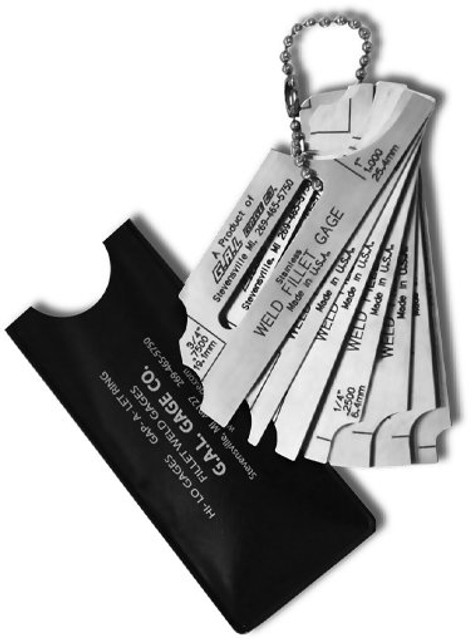Gauge Fillet Weld Basics: Finest Practices and Common Mistakes
Gauge Fillet Weld Basics: Finest Practices and Common Mistakes
Blog Article
The Ultimate Guide to Fillet Weld Top Quality Control: Making Certain Stamina and Resilience in Your Welded Joints
In the world of welding, making certain the strength and longevity of fillet welds is vital for the honesty of bonded joints. As we get started on this exploration of fillet weld high quality control, we will certainly reveal vital factors that affect weld strength, dig into effective evaluation approaches, and discuss strategies for protecting against typical weld defects.
Relevance of Fillet Weld High Quality Control
Guaranteeing appropriate fillet weld quality control is critical in ensuring the architectural integrity and longevity of welded elements in different industries. Fillet welds are generally utilized in architectural steelwork, bridges, pressure vessels, pipelines, and various other vital facilities where the stamina of the weld is vital to general safety and efficiency. Quality assurance steps such as aesthetic inspections, non-destructive screening, and adherence to welding treatments assist identify prospective flaws like lack of blend, insufficient infiltration, undercutting, or extreme reinforcement.
Key Factors Influencing Weld Toughness
Attaining ideal weld toughness requires careful factor to consider of various vital aspects that influence the integrity and durability of the bonded joint. The first crucial variable appertains joint preparation, which entails cleansing the base metals to eliminate any kind of pollutants that can deteriorate the weld. Additionally, the fit-up of the joint is necessary to guarantee correct infiltration and fusion of the filler product.
The choice of the ideal welding method and parameters likewise plays a significant role in determining weld strength. Elements such as heat input, travel speed, and electrode angle can influence the top quality of the weld. Maintaining the right interpass temperature throughout multi-pass welding is essential to avoid fracturing and make sure a strong bond between the layers.
In addition, the choice of filler product and its compatibility with the base steels is vital for accomplishing high weld stamina. Using filler product with the suitable mechanical properties can boost the general stability of the weld. Post-weld heat therapy and appropriate assessment methods are crucial steps in ensuring the strength and toughness of the bonded joint.
Examination Approaches for Weld Integrity

One more crucial examination approach is fluid penetrant screening, where a fluid color is put on the weld surface - Gauge Fillet Weld. The color seeps right into any type of surface-breaking problems, making them noticeable under UV light. This method is reliable for identifying imperfections that may not be visible to the naked eye


Ultrasonic screening is likewise commonly used for inspecting weld honesty. High-frequency acoustic wave are directed into the weld, and any type of interruptions in the sound wave pattern indicate potential flaws like cracks or absence of combination.
These evaluation approaches play a crucial role in making sure the quality and reliability of welds, inevitably adding to the total strength and toughness of welded joints in commercial setups.
Stopping Typical Weld Defects
In order to maintain the structural honesty of bonded joints in industrial applications, it is essential to execute safety nets to attend to common weld defects. One common defect is absence of combination, where the filler material falls short to bond appropriately with the base metals, bring about weak points in the weld. This can be stopped by ensuring proper warm control and using the appropriate welding technique.
An click for more info additional regular problem that site is porosity, triggered by gas entrapment in the weld metal during the welding procedure. To stop this, it is important to clean the base metals extensively, utilize dry electrodes, and preserve an appropriate welding environment with correct ventilation.
Additionally, splits in welds can endanger the joint's strength. To avoid this flaw, it is necessary to manage the air conditioning price after welding, utilize preheating when required, and choose appropriate welding parameters.
Enhancing Bonded Resilience With Correct Strategies
To boost the longevity and integrity of welded frameworks, using innovative welding strategies is vital. One vital technique to boost weld toughness is to make certain correct weld grain placement. By placing the weld bead properly within the joint, the weld's strength and resistance to tiredness can be substantially enhanced. Additionally, using the appropriate welding specifications, such as voltage, current, and travel rate, is important for accomplishing a sturdy weld. These specifications directly influence the weld's penetration, blend, and total quality, contributing to its longevity.
Picking the right filler steel and ensuring the sanitation of the base metals can stop additions and various other flaws that might jeopardize the weld's toughness. By carrying out these appropriate strategies, welders can guarantee that their welded joints show extraordinary stamina and sturdiness, satisfying the highest possible quality criteria.
Verdict
To conclude, preserving premium quality control criteria for fillet welds is crucial for ensuring the toughness and index durability of bonded joints. By comprehending the key factors impacting weld toughness, making use of inspection approaches for weld stability, stopping usual weld flaws, and using proper techniques, welders can boost the general toughness of their welds. It is imperative to focus on quality assurance steps to create trusted and long-lasting welded joints.
In the world of welding, ensuring the strength and longevity of fillet welds is extremely important for the integrity of bonded joints. As we begin on this exploration of fillet weld quality control, we will reveal crucial variables that affect weld toughness, dig right into efficient examination techniques, and talk about methods for protecting against usual weld issues.Achieving ideal weld strength needs careful factor to consider of various essential aspects that influence the integrity and toughness of the bonded joint (Gauge Fillet Weld).In final thought, preserving high quality control criteria for fillet welds is crucial for guaranteeing the toughness and resilience of bonded joints. By recognizing the crucial elements impacting weld toughness, utilizing inspection techniques for weld stability, stopping typical weld flaws, and employing proper strategies, welders can boost the total durability of their welds
Report this page